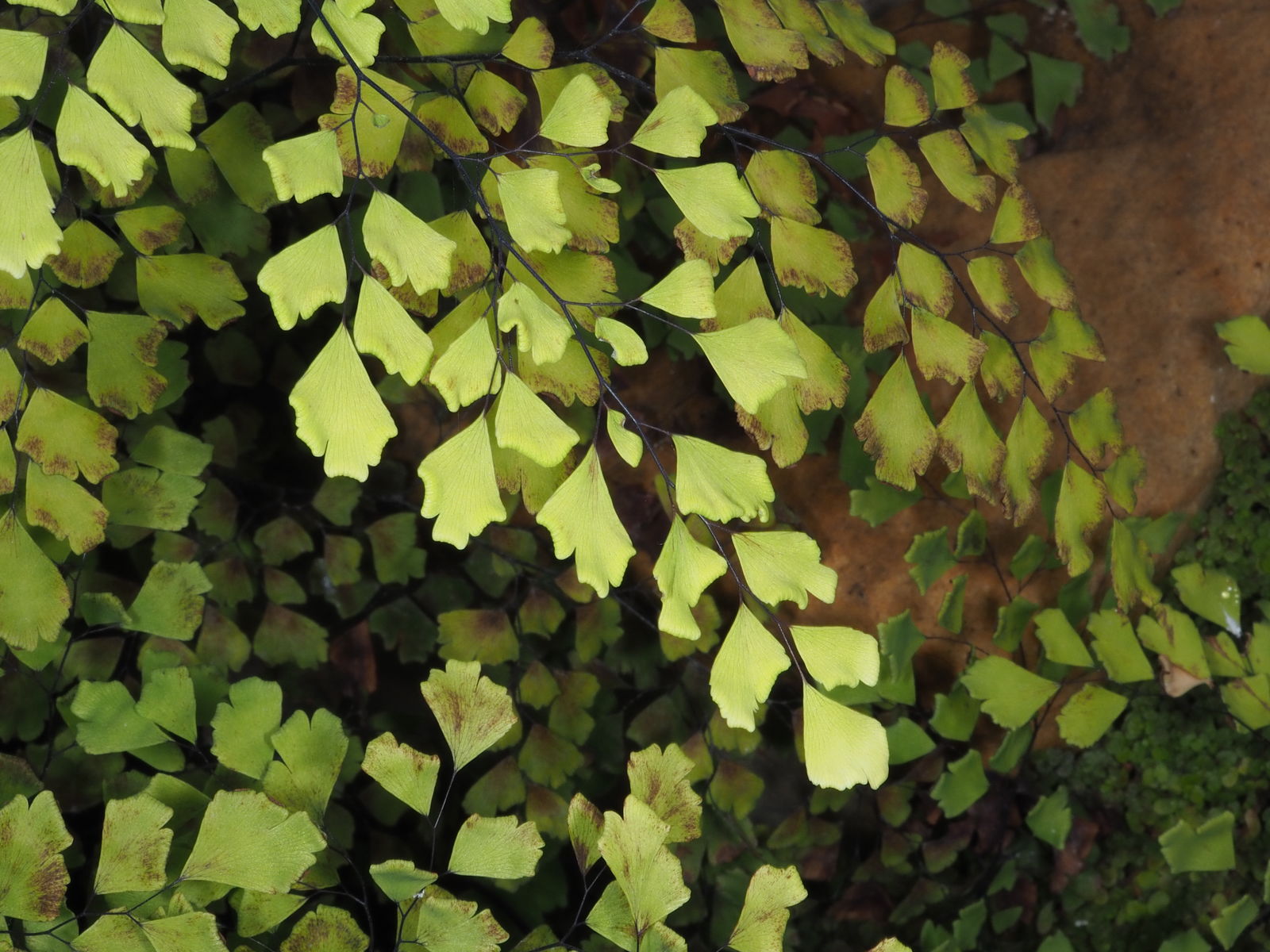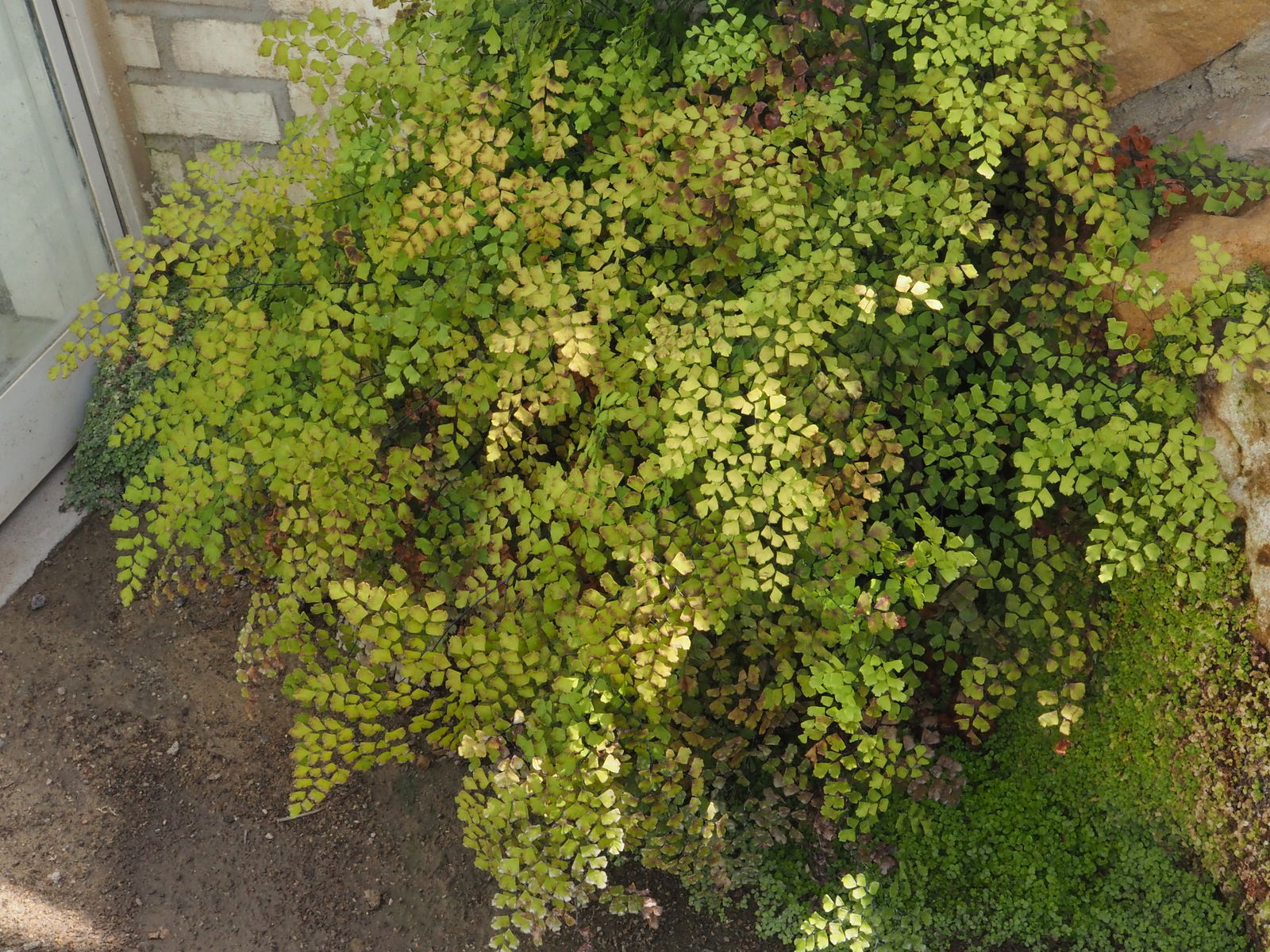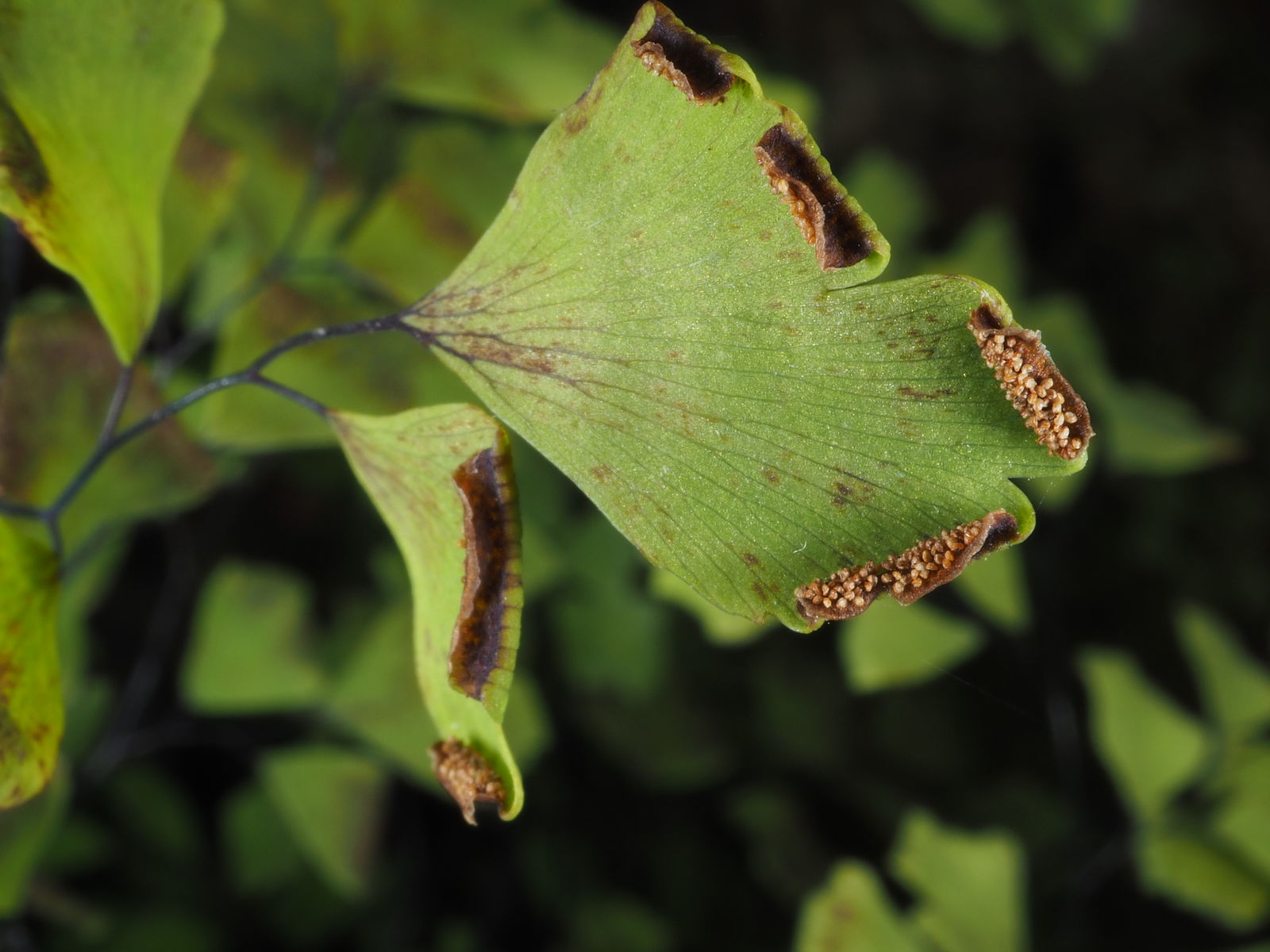Delta Maidenhair Fern
adiantum raddianum
Also known as: ["Frisée Adiantum","Delta Maidenhair"]
Overview
A delicate, graceful fern with fan-shaped leaflets on black stems, native to tropical regions.
Benefits & Perks
["aesthetic foliage","shade tolerant","air purifying"]
Botanical Classification
| Phylum: | Tracheophyta |
| Class: | Polypodiopsida |
| Order: | Pteridales |
| Family: | Pteridaceae |
| Genus: | Adiantum |
| Botanical Name: | Adiantum raddianum |
Plant Characteristics
Basic Information
- Category: Leaf Plants
- Suitable Location: indoor pot in a humid bathroom or kitchen, or shaded outdoor garden bed
- Suitable For:
- Is Weed: No
- Allergenicity: low
Environmental Needs
- Climate: {"temperatureRange":"15–27°C"}
- Hardiness: {"zones":"10–11"}
- Misting: every 2–3 days to maintain high humidity, especially in dry environments
- Drainage: Fast-draining to prevent waterlogging.
- Soil Type: Well-draining, slightly acidic soil with organic matter like peat moss or compost.
Maintenance Level
- Maintenance Level: moderate
- Toughness Level: moderate
- Pruning Frequency: As needed, typically every few weeks during growing season.
- Pruning Intensity: Light pruning to remove damaged or old fronds.
Care Details
Ideal Sunlight Coverage:
Bright, indirect light for 6–8 hours daily; avoid direct sunlight which can scorch leaves.
Sunlight Tolerance Tips:
Acclimate to brighter light gradually; place in a spot with filtered light; move to a shadier location during intense summer sun.
Care Requirements
Care Difficulty
moderatemoderate
Sunlight
partial shade to filtered light
Rotate plant weekly for even growth; use sheer curtains to filter direct light; avoid south-facing windows in summer.
Watering
every 5–7 days, allowing soil to dry slightly between waterings
Keep soil consistently moist but not waterlogged; avoid letting the soil dry out completely; ensure good drainage.
Soil
moist, well-draining, peat-based potting mix
pH: 5.5–6.5 (slightly acidic).
Ensure soil is not compacted; avoid heavy clay soils; maintain consistent moisture.
Temperature
Prefers 60–75°F (15–24°C); tolerates 50–80°F (10–27°C); avoid sudden temperature fluctuations.
Keep away from heating/cooling vents; maintain stable temperatures; use a thermometer to monitor.
Fertilizing
every 4–6 weeks during active growth (spring and summer) with a balanced liquid fertilizer
Fertilize only when actively growing; flush soil occasionally to prevent salt buildup; stop fertilizing in fall.
Propagation
Methods
Stem cuttings or division of rhizomes.
Step-by-Step Propagation Guide
- Take a healthy stem cutting with a few leaves.
- Dip in rooting hormone (optional).
- Plant in moist propagation medium.
- Maintain high humidity.
Best Time: Spring or early summer when the plant is actively growing.
Environment
High humidity (70–90%), warm temperatures (65–75°F), and indirect light.
Medium
Peaty, well-draining mix like sphagnum moss or a mix of peat and perlite.
Hormone
Optional, but can help speed up rooting.
Timeline
Roots may develop in 3–6 weeks; new growth in 2–4 months.
Tools Needed
Sharp scissors, rooting hormone, propagation tray, humidity dome.
Quick Tips
Keep soil consistently moist; provide bottom heat if possible; avoid direct sunlight.
Pruning & Repotting
Pruning Guide
Method
Snip individual fronds at the base with clean, sharp scissors.
Pruning Plan
Remove dead or yellowing fronds to maintain appearance and encourage new growth.
Tools
Sharp scissors or pruning shears, disinfectant.
Checklist
Inspect for dead/damaged fronds; use clean tools; remove carefully without damaging healthy growth.
Repotting Guide
Best Season
Spring, before the growing season begins.
Pot Size
One size larger pot (e.g., +2 inches in diameter).
Method
Gently remove plant; trim any dead roots; place in a slightly larger pot with fresh soil; water thoroughly.
Suggestions
Repot every 2–3 years or when roots fill the pot; use fresh, well-draining soil.
Checklist
Check root bound status; prepare new pot with drainage; handle roots gently; water after repotting.
Advanced Care Tips
Watering Mastery
Watering Checklist
Check soil moisture daily; water thoroughly; ensure drainage; discard excess water.
How to Apply Water Properly
Water until it drains from the bottom of the pot; focus on the root zone; water in the morning to allow foliage to dry; ensure excess water is removed from saucers.
Watering Schedule Tips
Water thoroughly when the top inch of soil feels dry; reduce frequency in winter to prevent root rot.
Soil Improvement
Add perlite or sand for drainage; incorporate peat moss for acidity; use a commercial fern mix.
Temperature Stress Management
Signs of Temperature Issues
Yellowing leaves, stunted growth, or browning leaf tips.
Cold Stress
Slows growth, causes leaf discoloration, and may lead to root damage.
Solution: Move to a warmer location; insulate pots; avoid placing near drafty windows or doors.
Hot Stress
Wilting, leaf scorch, or dehydration even if soil is moist.
Solution: Increase humidity; provide shade; water more frequently but avoid waterlogging.
Fertilizing Guide
Fertilizing Checklist
Check growth phase; dilute fertilizer; apply to moist soil; avoid contact with foliage.
Fertilizing Method
Use a balanced liquid fertilizer diluted to half strength every 4–6 weeks during growing season (spring/summer); avoid fertilizing in winter.
Common Problems & Solutions
Toxicity Warning
Cats
Non-toxicAdiantum raddianum is not toxic to cats. There are no reported cases of adverse effects in felines from exposure to this plant.
⚡ Toxic If:
None
Dogs
Non-toxicAdiantum raddianum is not toxic to dogs. There are no reported cases of adverse effects in canines from exposure to this plant.
⚡ Toxic If:
None
Humans
Non-toxicAdiantum raddianum, commonly known as the Delta Maidenhair Fern, is not considered toxic to humans. It has no known adverse effects on human health when handled or ingested.
⚡ Toxic If:
None
Frequently Asked Questions
Q: How often should I water Adiantum raddianum?
A: Keep the soil consistently moist but not waterlogged; water when the top inch of soil feels dry.
Q: Does this fern require direct sunlight?
A: No, it prefers bright, indirect light or partial shade.
Q: Why are the leaves turning yellow?
A: Yellowing leaves may indicate overwatering, underwatering, or insufficient humidity.
Quick Reference
| Family: | Pteridaceae |
| Care: | moderate |
| Light: | partial shade to filtered ligh |
| Water: | every 5–7 days, allowing soi |
Get Expert Care Tips
Download the Plantious app for personalized care reminders and plant identification!
Google Play App Store







